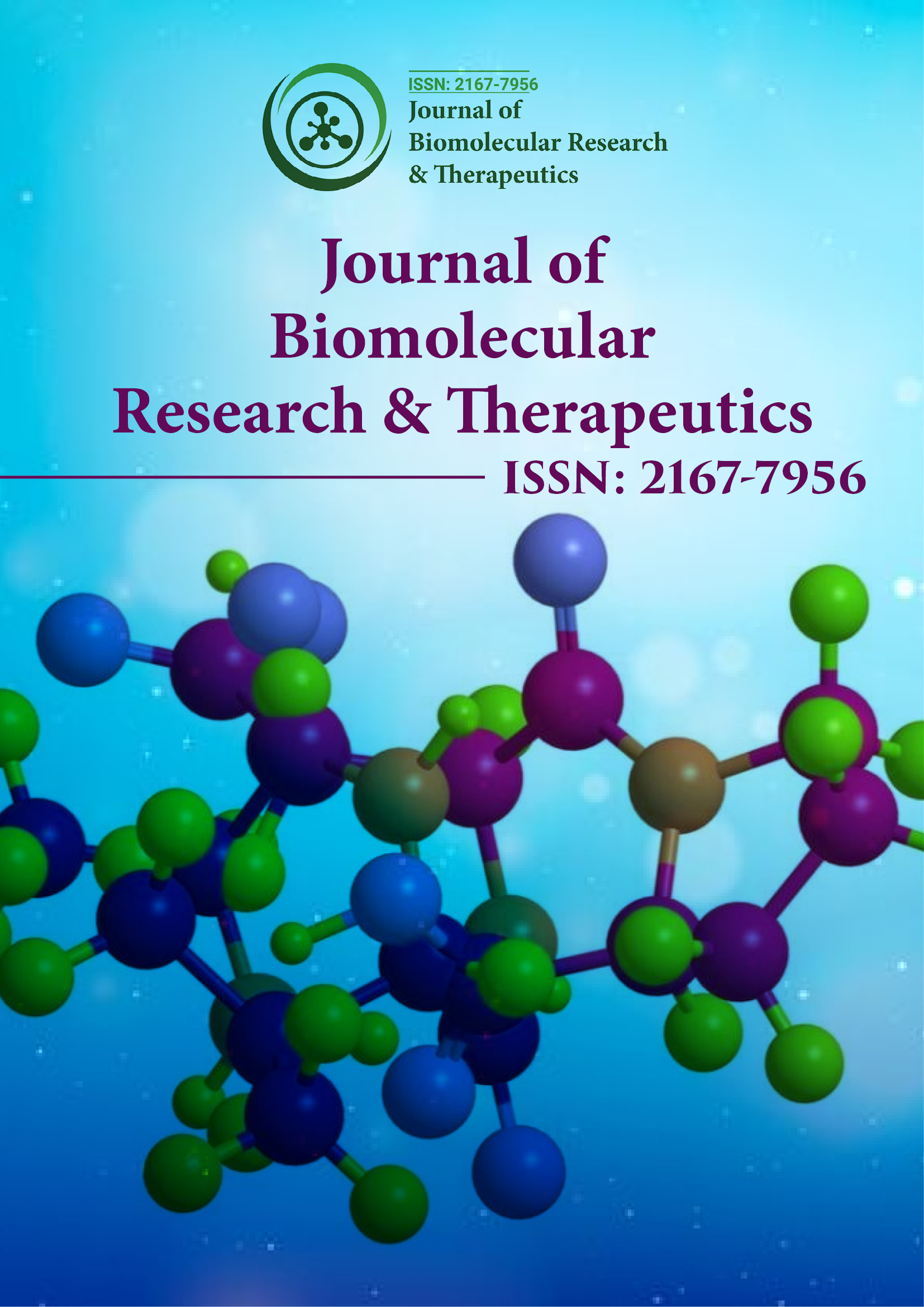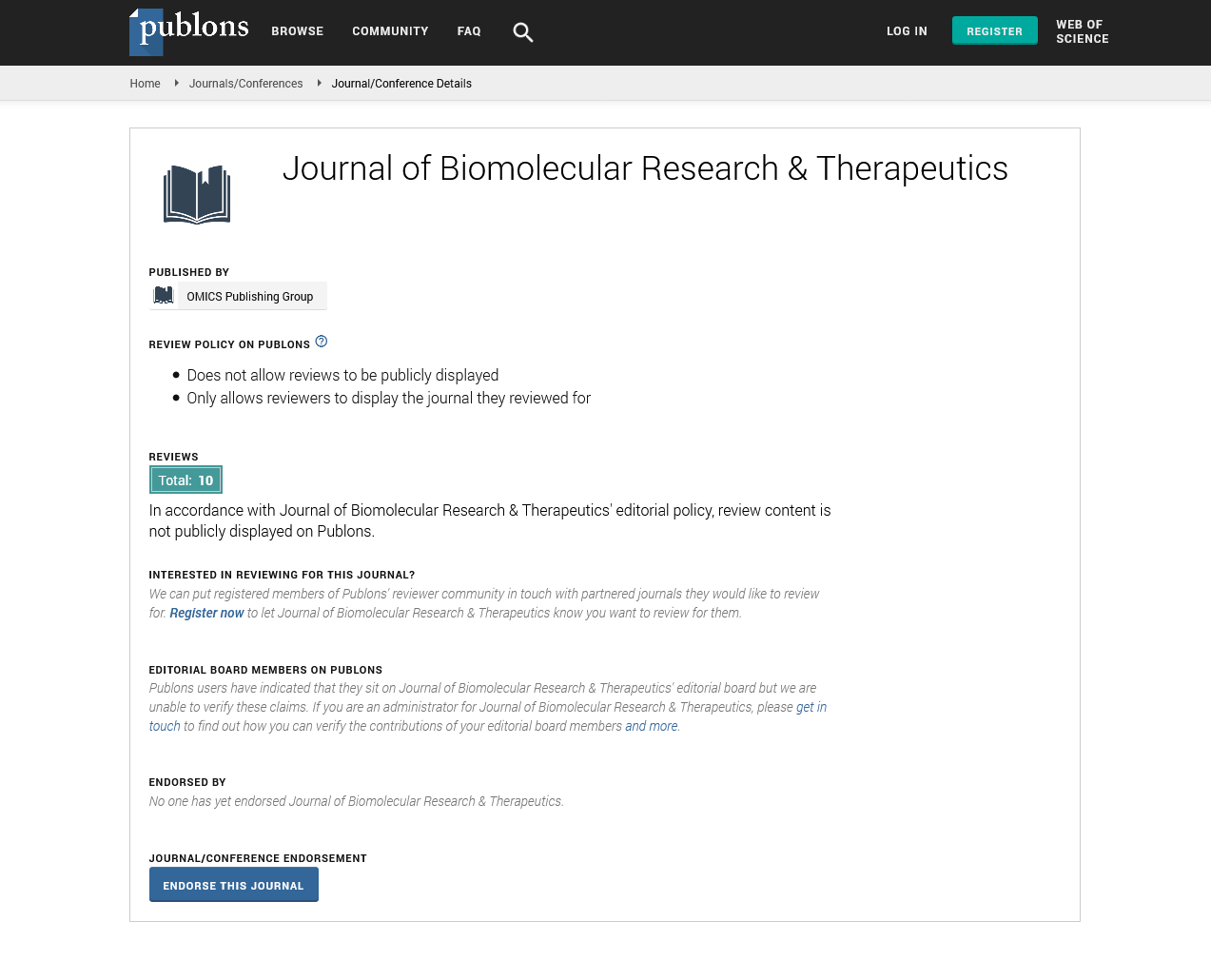Indexed In
- Open J Gate
- Genamics JournalSeek
- ResearchBible
- Electronic Journals Library
- RefSeek
- Hamdard University
- EBSCO A-Z
- OCLC- WorldCat
- SWB online catalog
- Virtual Library of Biology (vifabio)
- Publons
- Euro Pub
- Google Scholar
Useful Links
Share This Page
Journal Flyer

Open Access Journals
- Agri and Aquaculture
- Biochemistry
- Bioinformatics & Systems Biology
- Business & Management
- Chemistry
- Clinical Sciences
- Engineering
- Food & Nutrition
- General Science
- Genetics & Molecular Biology
- Immunology & Microbiology
- Medical Sciences
- Neuroscience & Psychology
- Nursing & Health Care
- Pharmaceutical Sciences
Opinion Article - (2023) Volume 12, Issue 3
Primary Cilium Function and Cancer Signaling in Microenvironment
Lily Chloe*Received: 03-Mar-2023, Manuscript No. BOM-23-20307; Editor assigned: 06-Mar-2023, Pre QC No. BOM-23-20307 (PQ); Reviewed: 22-Mar-2023, QC No. BOM-23-20307; Revised: 29-Mar-2023, Manuscript No. BOM-23-20307 (R); Published: 05-Apr-2023, DOI: 10.35248/2167-7956.23.12.275
Description
The Primary Cilium (PC) is an antenna-like structure that extends beyond the cell membrane. It is crucial in controlling mitochondrial transmission, which affects growth, differentiation and migration. Evidence is mounting that ciliary abnormalities cause ciliopathies and that ciliary dysregulation is also important in cancer genesis and progression. Surprisingly repairing the cilia can decrease cancer cell proliferation. The significance of primary cilia in cancer on the other it is still being contested. In this paper it has explained about the significance of the primary cilium in cancers through structure, signal transduction, cilia construction and disassembly regulators and highlighted new primary cilium findings in tumor microenvironments and diverse malignancies revealing novel therapeutic targets in cancer.
The loss of primary cilia is seen in the majority of human malignant neoplasms. PC, on the other side, is known to be engaged in carcinogenesis in certain forms of neoplasms. The PC state in lung carcinomas is mostly unknown. The quantity of PC in these cells was not linked to the cell cycle phase. It also discovered that PC was preserved in metastases from PC-positive lung carcinomas. The hedgehog signaling pathway was also active in PC-positive lung carcinoma cells. Lung cancer is divided immunohistochemistry into two type’s Small Cell Lung Carcinoma (SCLC) and Non-Small Cell Lung Carcinoma (NSCLC). PC may be found in different histologic forms of pulmonary neoplasms and these tumors may exhibit particular features and signaling pathways. The discovery of such information could lead the way for the development of new treatment modalities for lung carcinomas in the future, as well as aid in the clinicopathologic differential diagnosis of lung cancers. Cell signaling pathways play critical roles in the regulation of multicellular organisms in a wide range of tasks. During all phases of oncogenesis, altered signalling pathways are frequently discovered. receptors and effectors are also found at the primary cilium, which is usually regarded as the cellular sensory antenna. In such cell lines from mammals the presence of PC is tightly tied to the cell cycle in other words, PC is detected during the quiet phase of the cell cycle. Nevertheless in individual malignant tumors the existence of PC may not always be linked with the phase of the cell cycle.
As a result, it investigated the link among cell growth and the occurrence of PC in lung carcinomas. The number of basal cellular proteins or orientations proteins increased during primary cilium formation. Several of these enzymes have been linked to cancer in various ways basal body component required for cilium production has been linked to a decrease in centrioles. The main cilium is an important environmental detector. Despite its significance for the control of calcium and mechanical signals, primary cilia are also involved in the control of various cell microenvironment signals associated with cancer such as inflammatory cytokines and metabolic signals. Additionally the primary cilium may serve as a medium for the transmission of cell-cell communication. The main nucleus can act as a diagnostic for tumor-supporting capabilities and the ability to adapt to hypoxia and inflammatory settings. As a result, inflammation appears to influence primary cilium creation cytokines and hypoxic and cytokine production conditions may inhibit primary cilium production leading to tumor formation.
Citation: Chloe L (2023) Primary Cilium Function and Cancer Signaling in Microenvironment. J Biol Res Ther. 12:265.
Copyright: © 2023 Chloe L. This is an open access article distributed under the terms of the Creative Commons Attribution License, which permits unrestricted use, distribution, and reproduction in any medium, provided the original author and source are credited.

